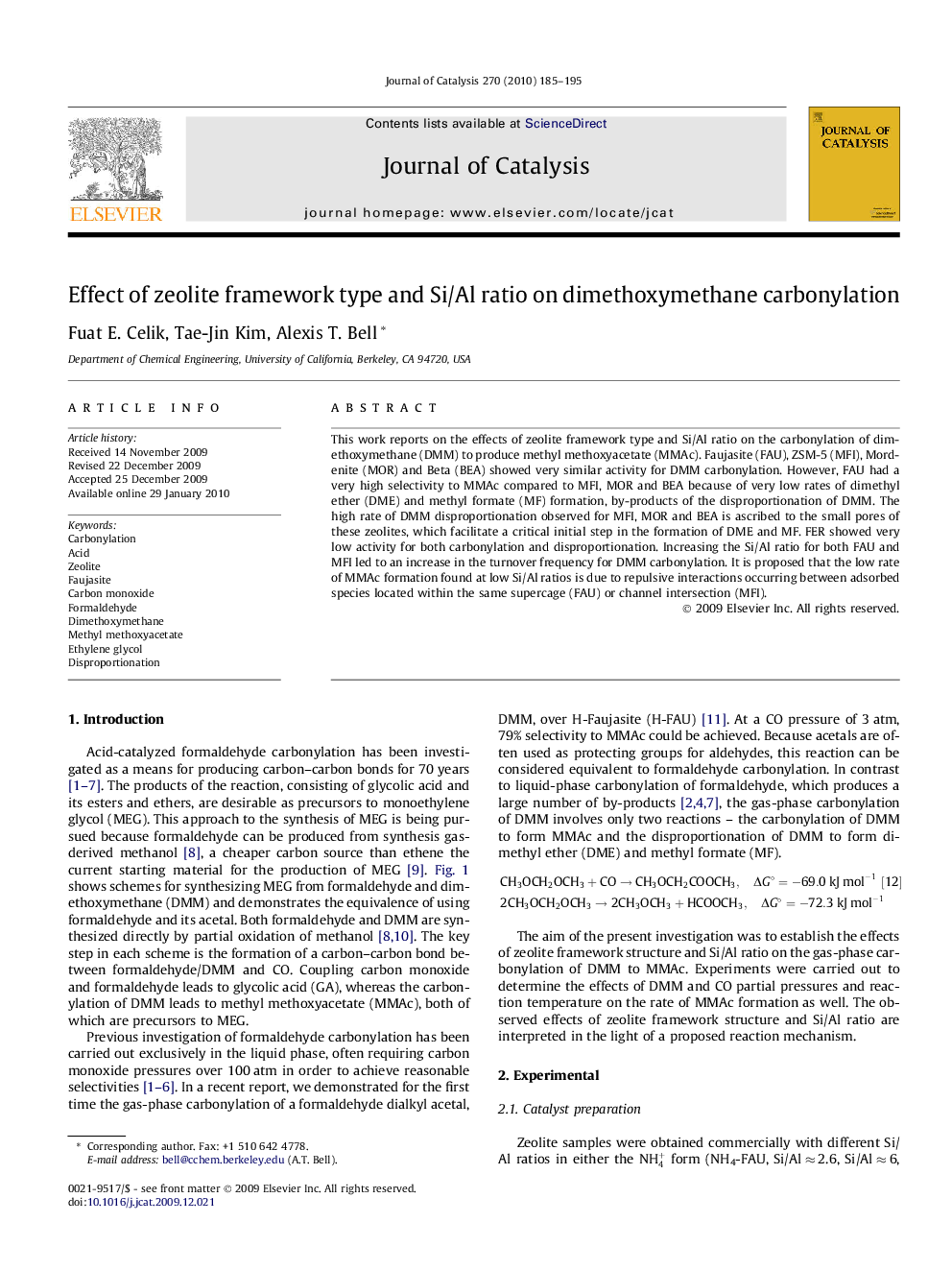| Article ID | Journal | Published Year | Pages | File Type |
|---|---|---|---|---|
| 62390 | Journal of Catalysis | 2010 | 11 Pages |
This work reports on the effects of zeolite framework type and Si/Al ratio on the carbonylation of dimethoxymethane (DMM) to produce methyl methoxyacetate (MMAc). Faujasite (FAU), ZSM-5 (MFI), Mordenite (MOR) and Beta (BEA) showed very similar activity for DMM carbonylation. However, FAU had a very high selectivity to MMAc compared to MFI, MOR and BEA because of very low rates of dimethyl ether (DME) and methyl formate (MF) formation, by-products of the disproportionation of DMM. The high rate of DMM disproportionation observed for MFI, MOR and BEA is ascribed to the small pores of these zeolites, which facilitate a critical initial step in the formation of DME and MF. FER showed very low activity for both carbonylation and disproportionation. Increasing the Si/Al ratio for both FAU and MFI led to an increase in the turnover frequency for DMM carbonylation. It is proposed that the low rate of MMAc formation found at low Si/Al ratios is due to repulsive interactions occurring between adsorbed species located within the same supercage (FAU) or channel intersection (MFI).
Graphical abstractThe role of zeolite structure and composition in the carbonylation of dimethoxymethane to methyl methoxyacetate was investigated at steady state. Faujasite (FAU) showed higher selectivity than medium-pore zeolites such as ZSM-5 (MFI). Carbonylation rates increased with increasing Si/Al ratio until one or fewer Al atoms were located in the supercage of FAU or the channel intersections of MFI.Figure optionsDownload full-size imageDownload high-quality image (71 K)Download as PowerPoint slide
